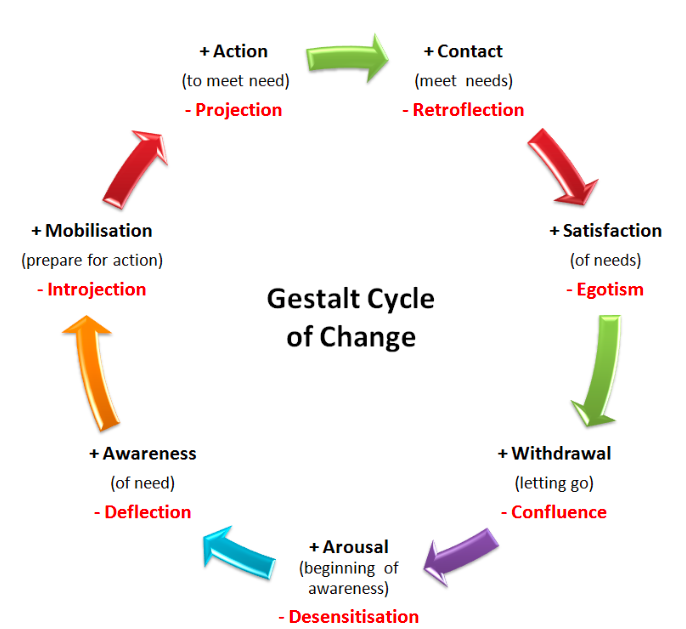Fritz Perls: Exploring Gestalt Therapy
 Fritz Perls, an innovative psychotherapist and one of the key figures in the development of Gestalt therapy, made significant contributions to the field of psychology. His innovative approach to therapy, grounded in the concept of Gestalt, and his pioneering use of chair work and psychodrama, challenged traditional psychoanalytic practices and paved the way for experiential therapies. However, Perls’ flamboyant style and controversial public demonstrations have sometimes overshadowed the depth and complexity of his psychological theories.
Fritz Perls, an innovative psychotherapist and one of the key figures in the development of Gestalt therapy, made significant contributions to the field of psychology. His innovative approach to therapy, grounded in the concept of Gestalt, and his pioneering use of chair work and psychodrama, challenged traditional psychoanalytic practices and paved the way for experiential therapies. However, Perls’ flamboyant style and controversial public demonstrations have sometimes overshadowed the depth and complexity of his psychological theories.
Did you enjoy this article? Checkout the podcast here: https://gettherapybirmingham.podbean.com/
Fritz Perls Major Theories:
Theory of Dental Aggression:
Fritz Perls believed that dental aggression developed in infancy through the interaction between the infant and their environment, particularly with their primary caregivers. He proposed that during early development, infants have basic needs such as nourishment, comfort, and emotional connection. When these needs are not adequately met, the infant may experience frustration, leading to the buildup of tension and the development of dental aggression.
Perls suggested that if an infant consistently experiences unmet needs or encounters excessive control or rejection from caregivers, it can result in the internalization of aggressive impulses. The infant may internalize a sense of frustration and a need to assert themselves, which later manifests as dental aggression in their behaviors and interactions.
Furthermore, Perls emphasized the role of parental modeling in the development of dental aggression. If the infant observes aggressive behaviors or unhealthy patterns of communication within their caregiving environment, they may internalize these behaviors and adopt them as their own way of expressing unmet needs or frustrations.
Theory of Gestalt Formation:
Perls believed that individuals naturally seek completion and wholeness. He proposed the theory of Gestalt formation, which suggests that our perception organizes sensory information into meaningful patterns or Gestalts. According to Perls, incomplete or unresolved Gestalts can lead to psychological disturbances, and therapy aims to help individuals become aware of and integrate these fragmented parts.
Theory of Contact:
Perls emphasized the importance of contact in therapy. He viewed contact as the interaction between individuals and their environment, including people, objects, and situations. Perls believed that healthy contact involved being fully present in the here and now, engaging authentically with others, and maintaining boundaries. He identified different types of contact, such as withdrawal, introjection, projection, and retroflection, which can influence one’s ability to establish healthy relationships.
Theory of the Self:
Perls’ theory of the self emphasized the idea that individuals have different layers or levels of awareness. He proposed that the self consists of three components: the “phony self,” which is the façade people present to others; the “ideal self,” which represents societal and cultural expectations; and the “real self,” which reflects an individual’s genuine thoughts, emotions, and desires. Perls believed that therapy should focus on helping individuals align their real self with their actions and behaviors.
Theory of the Empty Chair:
One of Perls’ most well-known techniques in Gestalt therapy is the empty chair technique. It involves having clients imagine a person or an aspect of themselves in an empty chair and engaging in a dialogue or role-play. This technique aims to enhance self-awareness, explore conflicting emotions or perspectives, and facilitate resolution or integration of unresolved issues.
Theory of Unfinished Business:
Perls recognized the significance of unresolved past experiences and unfinished emotional business. He believed that unresolved emotions and unfinished situations from the past can hinder personal growth and contribute to psychological distress. Perls emphasized the importance of bringing these unfinished business aspects into awareness and working through them in therapy to achieve closure and healing.
Theory of Creative Adjustment:
Perls viewed creativity as a vital aspect of personal growth and self-expression. He believed that individuals have innate creative potential and that therapy should encourage self-exploration and creative expression. Perls incorporated various creative techniques, such as art, movement, and visualization, to help individuals tap into their creative resources and promote self-discovery.
Understanding Gestalt Therapy and Chair Work:
Gestalt therapy, as conceptualized by Fritz Perls, is a holistic and experiential form of psychotherapy that focuses on the present moment, the whole person, and the interaction between individuals and their environment. The term “Gestalt” refers to the concept of a complete and organized whole, highlighting the importance of perceiving and experiencing the interconnections of thoughts, feelings, and behaviors.
Chair work, a prominent technique in Gestalt therapy, involves the use of empty chairs to facilitate dialogue and exploration of internal conflicts or unresolved issues. The therapist guides the client through a process of engaging with different parts of themselves or significant others, encouraging emotional expression and gaining new insights.
Gestalt Therapy: Experiential, not Analytical:
Perls and his colleagues shifted the focus of therapy from solely analyzing past experiences and unconscious processes, as advocated by psychoanalysis, to emphasizing the present moment and direct experience. This marked the birth of experiential therapy, which aimed to help individuals gain self-awareness, take responsibility for their choices, and promote personal growth. Experiential therapy was a revolution that allowed patients to re-enter and heal traumatic experiences by feeling them and not just thinking about it.
The East-West Divide in Gestalt Therapy:
Following the development of Gestalt therapy, a split emerged within the Gestalt community, particularly between the East and West Coast of the United States. On the East Coast, Gestalt therapy was viewed as a philosophical approach to human existence, emphasizing personal growth, authenticity, and self-expression. They saw Gestalt practice as a way to revolutionize psychotherapy and speed up the time it took to get better. On the West Coast, however, some practitioners embraced Gestalt therapy as a more spiritual or even religious practice, incorporating elements of mysticism and transcendence.These practitioners were trying to create a religion of psychotherapy instead of keeping it in the clinic. Professors, academics and classical psychoanalysts often accused the west coast school of being a new age cult. People critical of one school often distanced themselves from both which further hurt adoption of the modality.
Perls’ Credibility and Showmanship:
Fritz Perls’ captivating and theatrical style of presenting Gestalt therapy often drew attention. Unlike something lengthy like psychoanalysis, Gesstalt therapy was experiential and parts of it could be demonstrated in front of crowds. While his public demonstrations showcased the power of Gestalt therapy in a condensed and dramatic format, they also led to criticism and accusations of showmanship. Psychoanalysts felt threatened by the new therapy and used the opportunity to write Perls off as a charlatan like a stage medium or hypnotist. Perls felt he was demonstrating dramatic and inspiring parts of a effective technique in order to encourage the new psychologies adoption. Some argued that Perls’ demonstrations did not accurately represent the full complexity and depth of Gestalt therapy as a therapeutic approach. Many academics kept Gestate out of universities and refused to research it.
Perls’ Legacy and Contributions:
Despite the controversies surrounding Perls’ public persona, his work and ideas continue to shape the field of psychotherapy. Gestalt therapy has evolved over time, integrating insights from other therapeutic modalities and expanding its applications in various contexts. Contemporary practitioners have refined and adapted the approach to suit the needs of diverse populations, ensuring its continued relevance and efficacy.
Fritz Perls, with his pioneering work in Gestalt therapy and innovative techniques such as chair work, made significant contributions to the field of psychology. While his public demonstrations may have detracted from his credibility as a serious therapist, it is important to recognize the depth and complexity of his psychological theories. Gestalt therapy, as an experiential and holistic approach, continues to impact the field, offering individuals a pathway towards self-awareness, personal growth, and the integration of their thoughts, feelings, and behaviors.
The Gestalt Field: Understanding the Heart of Gestalt Therapy
At the core of Gestalt therapy lies the concept of the Gestalt field, which emphasizes the significance of the interaction between individuals and their environment. Developed by Fritz Perls and his colleagues, Gestalt therapy focuses on the present moment, holistic awareness, and the exploration of the individual’s relationship with their surroundings. This article explores the Gestalt field and how it is utilized in therapy to facilitate self-awareness, personal growth, and meaningful change.
Understanding the Gestalt Field:
The Gestalt field refers to the interconnectedness of individuals with their physical, social, and psychological environments. It recognizes that humans exist within a larger context and that their experiences are shaped by their interactions with the people, objects, and systems around them. The field encompasses the immediate surroundings as well as the broader social and cultural factors that influence an individual’s perception and behavior.
Using the Gestalt Field in Therapy:
Creating Awareness:
Gestalt therapy aims to increase awareness of the individual’s experiences and how they are connected to their environment. Therapists help clients recognize their emotions, thoughts, sensations, and behaviors as they unfold in the present moment. By cultivating this awareness, clients gain insight into how they are influenced by their surroundings and how they contribute to their own experiences.
Exploring Contact and Withdrawal:
The Gestalt field also focuses on the dynamics of contact and withdrawal. Contact involves actively engaging with the environment and other people, while withdrawal refers to disengagement or avoidance. In therapy, clients explore their patterns of contact and withdrawal, discovering when and how they engage or disengage from others and their environment. By examining these patterns, individuals can develop healthier ways of relating and connecting with the world around them.
Working with the Here and Now:
The Gestalt field places emphasis on the present moment experience. In therapy, the therapist and client pay attention to the immediate sensations, emotions, and thoughts that arise within the therapeutic relationship. By focusing on the here and now, clients can gain insights into their patterns of relating, as well as explore alternative ways of responding to their environment.
Dialogue and Role-play:
The Gestalt field encourages active dialogue and role-play to explore and gain insight into various aspects of an individual’s experience. Through dialogues, individuals can engage in a direct exploration of conflicting internal voices or unresolved issues. Role-playing allows clients to explore different perspectives and experiences within the therapeutic context, facilitating greater understanding and personal growth.
Experimentation and Integration:
Gestalt therapy encourages clients to experiment with new ways of being and relating. Through creative experiments, individuals can explore different possibilities and test alternative behaviors or perspectives. The therapist supports the client in integrating these new experiences and insights into their daily life, fostering personal growth and change.
The Gestalt field forms the foundation of Gestalt therapy, emphasizing the interconnectedness between individuals and their environment. By exploring the dynamics of contact and withdrawal, working in the present moment, engaging in dialogue and role-play, and fostering experimentation and integration, Gestalt therapists facilitate self-awareness, personal growth, and meaningful change. The Gestalt field serves as a powerful framework for understanding and transforming individuals’ experiences, promoting holistic well-being and the development of authentic, fulfilling relationships with the world around them.
The Gestalt Prayer
I do my thing and you do your thing.
I am not in this world to live up to your expectations,
And you are not in this world to live up to mine.
You are you, and I am I,
and if by chance we find each other, it’s beautiful.
If not, it can’t be helped.
— Fritz Perls, “Gestalt Therapy Verbatim”, 1969
The Gestalt prayer, formulated by Fritz Perls, encapsulates the core values of Gestalt psychology and has had a profound impact on both the field of psychotherapy and the broader cultural landscape. This article explores the significance of the Gestalt prayer, its alignment with Gestalt psychology principles, and its influence on the emergence of the New Age movement. Additionally, it delves into how Gestalt therapy overcomes the obstacles to change and examines Fritz Perls’ enduring influence on the profession.
The Gestalt Prayer:
The Gestalt prayer is a concise statement that reflects the underlying principles of Gestalt psychology. It goes as follows: “I do my thing, and you do your thing. I am not in this world to live up to your expectations, and you are not in this world to live up to mine. You are you, and I am I, and if by chance we find each other, it’s beautiful. If not, it can’t be helped.”
This prayer encapsulates the importance of individuality, personal responsibility, and authentic self-expression. It emphasizes that individuals have their own unique paths and that expecting others to conform to our expectations hinders genuine connection and personal growth. By embracing these principles, the Gestalt prayer encourages self-acceptance, respect for others, and the cultivation of meaningful and authentic relationships.
The Influence on the New Age Movement:
The Gestalt prayer played a significant role in defining the ethos of the New Age movement, which emerged in the latter half of the 20th century. The movement sought to integrate various spiritual and psychological practices, emphasizing self-exploration, personal growth, and alternative approaches to healing and well-being. The principles embedded in the Gestalt prayer, such as individual autonomy, acceptance, and the pursuit of personal truth, resonated deeply with the New Age movement’s values and ideals.
Overcoming the Obstacle of Change:
Gestalt therapy offers a unique perspective on change by highlighting the paradoxical nature of attempting to create change. According to Gestalt principles, efforts focused solely on change can block the natural process of change itself. Instead, Gestalt therapy invites individuals to fully experience and embrace their present reality, including their resistance or discomfort. By acknowledging and exploring these aspects, individuals can gain insight into the underlying patterns and beliefs that may be hindering their growth. This process of awareness and acceptance creates a fertile ground for organic and transformative change to occur.
Fritz Perls’ Long-Term Effect on the Profession:
Fritz Perls, as the co-founder of Gestalt therapy, left a lasting impact on the field of psychotherapy. While his theatrical demonstrations and showmanship attracted criticism, his work contributed to the advancement and evolution of psychotherapy as a whole. Perls challenged traditional psychoanalytic approaches by emphasizing the importance of the present moment, personal responsibility, and the integration of mind, body, and spirit. His emphasis on experiential and holistic practices has influenced numerous therapeutic modalities and continues to shape the field today.
The Effect of Experiential Therapy on the Profession
Experiential therapy emerged as a transformative force within the field of psychology, challenging the dominance of analytical psychology and fundamentally reshaping the therapeutic landscape. Unlike traditional analytical approaches that placed the therapist as the expert, experiential therapy shifted the focus to the patient, empowering them to become active participants and experts in their own healing journey. This article explores how experiential therapy disrupted analytical psychology by centering on the patient’s subjective experiences, emotions, and self-discovery.
The Shift to Experiential Therapy:
Analytical psychology, pioneered by luminaries like Sigmund Freud and Carl Jung, emphasized the significance of the unconscious mind and the interpretation of symbols and dreams. Therapists held the position of authority, interpreting and analyzing the patient’s experiences from their theoretical frameworks. While analytical approaches provided valuable insights into the human psyche, they often neglected the immediate experiences and emotions of the patient.
Empowering the Patient:
Experiential therapy challenged the traditional hierarchical relationship between therapist and patient by recognizing the patient as the expert of their own experiences. This approach acknowledges that individuals possess unique subjective perspectives and inner wisdom that can guide the therapeutic process. Therapists in experiential therapy serve as facilitators, creating a safe and supportive environment for clients to explore their emotions, thoughts, and behaviors.
The Therapeutic Process:
Experiential therapy encourages individuals to engage in direct and immersive experiences to gain deeper self-understanding. Techniques such as role-playing, guided imagery, expressive arts, and body-centered exercises are employed to access and process emotions, uncover underlying patterns, and foster personal growth. By focusing on present-moment experiences and encouraging clients to connect with their authentic selves, experiential therapy promotes self-awareness, emotional healing, and self-empowerment.
The Importance of Subjective Experience:
One of the fundamental tenets of experiential therapy is the recognition of the primacy of subjective experience. Rather than relying solely on intellectual interpretations, experiential therapists encourage clients to explore their emotions, bodily sensations, and intuitive insights. This emphasis on the here-and-now experience facilitates a deeper understanding of one’s feelings, needs, and personal narratives, leading to transformative shifts and greater self-acceptance.
Integration and Holistic Healing:
Experiential therapy places a strong emphasis on integration—bringing awareness to fragmented aspects of the self and facilitating their integration into a cohesive whole. By engaging in direct experiences, clients can explore unresolved emotions, conflicts, and traumas. Through this process, they can find new perspectives, develop healthier coping mechanisms, and integrate their past experiences into their present lives, fostering holistic healing and personal growth.
The Legacy of Experiential Therapy:
Experiential therapy’s patient-centered approach has had a profound impact on the field of psychology. It has paved the way for other humanistic, experiential, and person-centered therapies that prioritize the individual’s subjective experience and self-empowerment. Additionally, experiential therapy has influenced the development of mindfulness-based therapies, body-centered approaches, and expressive arts therapies, expanding the range of therapeutic interventions available to individuals seeking personal transformation.
Experiential therapy disrupted the traditional analytical approach by prioritizing the patient’s subjective experiences and empowering them as experts in their own healing process. By shifting the focus to the present moment, emotions, and direct experiences, experiential therapy promotes self-awareness, integration, and personal growth. Its patient-centered approach has reshaped the therapeutic landscape, emphasizing the importance of empowering individuals to discover their inner wisdom and facilitating transformative change from within.
The principles and techniques of Gestalt therapy have had a profound impact on various therapy modalities. In this article, we will explore some of the therapy modalities that have been influenced by Perls and Gestalt therapy.
Influence of Gestalt Therapy
Experiential Therapy:
Perls’ emphasis on direct experience and experiential learning has influenced the development of experiential therapy. This modality encourages clients to engage in activities and experiences that promote emotional expression, self-discovery, and personal growth.
Body-Centered Psychotherapy:
Perls recognized the significance of the body in the therapeutic process. This understanding paved the way for the development of body-centered psychotherapy modalities, such as Bioenergetics and Somatic Experiencing. These modalities focus on the mind-body connection and use body-based techniques to facilitate emotional healing.
Psychodrama:
Perls drew inspiration from psychodrama, a therapeutic approach developed by Jacob L. Moreno. Psychodrama involves role-playing and enactment of significant life events or conflicts to gain insight and promote emotional release. Perls integrated psychodramatic techniques into his work, influencing the development of psychodrama as a distinct therapy modality.
Expressive Arts Therapy:
Perls’ belief in the power of creative expression and spontaneous action has influenced expressive arts therapy. This modality utilizes various art forms, such as painting, drawing, music, and movement, to help individuals explore and express their thoughts and emotions.
Mindfulness-Based Therapies:
Perls emphasized the importance of staying present and aware of one’s experience. This concept has influenced mindfulness-based therapies, such as Mindfulness-Based Stress Reduction (MBSR) and Acceptance and Commitment Therapy (ACT). These therapies promote mindfulness and acceptance of thoughts and emotions to enhance psychological well-being.
Emotion-Focused Therapy (EFT):
Perls’ focus on emotions and the experiential aspect of therapy has influenced the development of Emotion-Focused Therapy. EFT emphasizes the exploration and processing of emotions to facilitate healing and personal growth.
Integrative Psychotherapy:
Perls’ holistic approach to therapy, which integrates the mind, body, and emotions, has influenced the field of integrative psychotherapy. This modality combines various therapeutic approaches and techniques to address the unique needs of individuals.
Did you enjoy this article? Checkout the podcast here: https://gettherapybirmingham.podbean.com/


























0 Comments